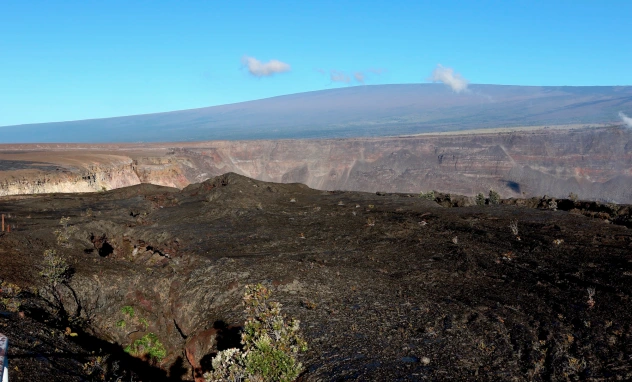Mauna Loa isn't really erupting, and there aren't any indications of an impending eruption. There have been no notable changes in monitoring data over the last 24 hours. Mauna Loa remains in a condition of high alert, as shown by increased seismic activity and peak inflation. The present disturbance is most likely caused by fresh magma intake 2-5 miles (3-8 kilometers) under Mauna Loa's surface.
The Hawaii County Civil Defense Agency issued a volcano advisory alert on Friday after 36 seismic events were identified near Mauna Loa, the world's largest active volcano, between both Thursday and Friday, that also persists to be in a "state of heightened unrest," following a US Geological Survey update.
The agency emphasizes that Mauna Loa is still not exploding and that there are "no signals of an impending outburst at this moment," stressing that the unrest producing the seismic activity is most certainly being caused by fresh magma input two to five miles under the volcano's top as reported by FoxNews.
The Current State: Heightened Unrest
Following the geological agency, the volcano's heightened state of unrest began in mid-September 2022, with increasing seismic frequencies. Because of the increased seismic waves, Hawaii Volcanoes National Park announced in early October that the Mauna Loa summit will be closed to all backcountry hikers until further notice. According to the US National Park Service, the major component of the park is still open.
Based on the Geological Survey, earthquake activity has increased from five to ten earthquakes per day in June 2022 to 10 to 20 earthquakes per day in July and August. Well, over 100 earthquakes per day were documented at their peak between Sept. 23 through Sept. 29, according to CNN. Hawaii's civil agency is constantly communicating around the island as behavior around the volcano continues to intensify. These meetings are designed to teach locals how to begin preparing for an emergency.
Talmadge Magno, the director for Hawaii County Civil Defense, noted that they are not scaring everyone; but the residents living within the slopes of Mauna Loa should be aware of the quakes and that there is a possibility of a lava tragedy.
Magno also stated that Mauna Loa accounts for more than half of the landmass of Hawaii Island. In 1950, lava from the volcano went 15 kilometers to the ocean in much less than three hours. The world's largest volcano has exploded over 30 times since 1843, this includes the 1984 eruption.

Previous Observations of the Volcano and Technologies
The rapid advancement of significant disturbance that led to the 1984 eruption is characteristic of Mauna Loa eruptions over the previous two centuries. In addition to their rapid commencement, explosions that migrate down any one of Mauna Loa's rift zones tend to have large volumes, and the ensuing lava flows can travel swiftly downslope toward the ocean from their eruptive vents. As per the "Volcano Watch" post published on March 11, 2022, lava flows sliding down the treacherous slopes of Southern Kona can strike the coastline as fast as 3-4 hours from the commencement of a rift outburst. Mauna Loa eruptions can be extremely dangerous because of their rapid onset, enormous lava masses, and fast lava flows.
Since 1984, the technologies researchers use to observe volcanoes have evolved significantly. Paper seismograms, hand-collected survey responses, and visual observations have been replaced with electronic broadband seismic data, continuous GPS readings, and a camera network. This means researchers now have a lot more information regarding Mauna Loa's present disturbance than ever before. Nonetheless, the situation might still shift quickly, and it is impossible to predict when this will occur, following a different report from USGS.
RELATED ARTICLE: [Study] Hawaiian Volcano is Causing the Earth's Crust to Sink: Is Another Volcanic Eruption Coming?
Check out more news and information on Volcano in Science Times.










